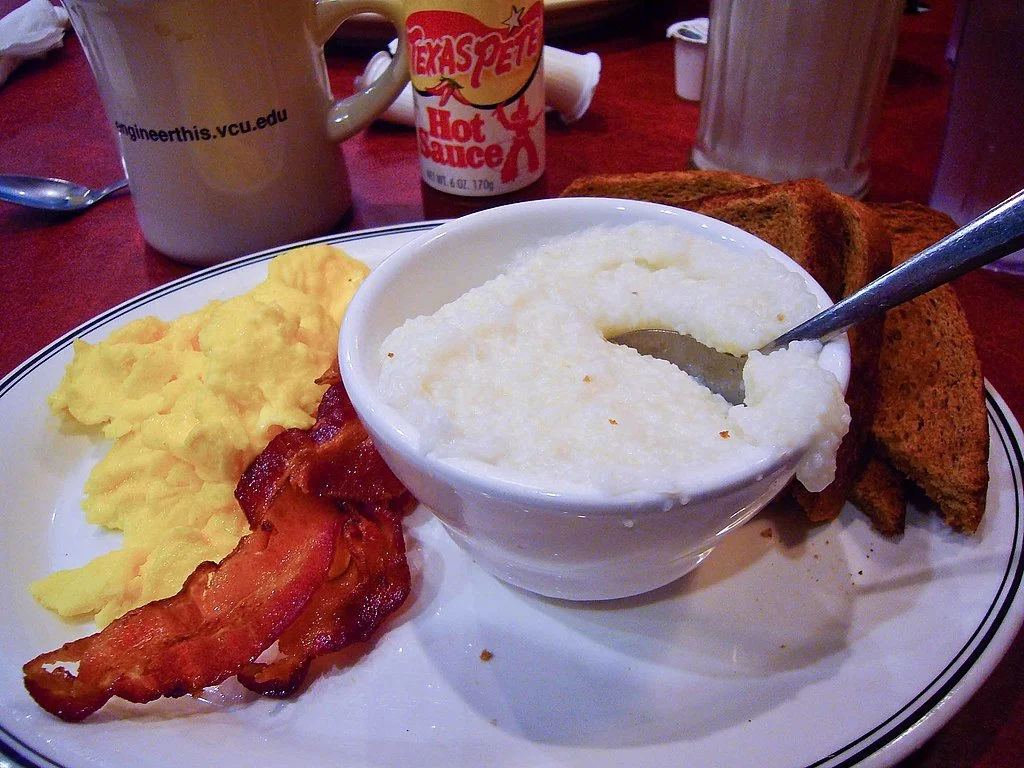Opening of the “Spanish Inquisition” sketch, Monty Python’s Flying Circus (1970) in which a man announces “trouble at t’ mill” before being interrupted by men in priestly garb claiming to be the Spanish Inquisition
19 May 2025
Trouble at t’ mill (or trouble at mill / trouble at the mill) is a British cliché used to refer to any kind of problem or disagreement. It evokes, in Lancashire dialect, some kind of accident or labor dispute at a factory. It arises out of a trope in literature and drama where a worker announces that there has been some kind of difficulty at the local factory. Through overuse by bad writers, the phrase became something of a joke.
The earliest use of the phrase that I have found in literature is actually from the United States. From a story that appeared in the December 1868 issue of Arthur’s Home Magazine:
“What’s the matter?” I asked, hurriedly.
“Why, there’s been trouble at the mill,” he said, cautiously, as if he feared to hurt me, “and I’ve brought Horace home, for he’s hurt pretty bad. Could you call Jonathan to help the men lift him out?”
I was round the back of the wagon before he had finished speaking, and gazing eagerly inside. Horace lay there with his head upon his arm, and his eyes shut, looking very pale; but I could not see that he was very much hurt, until suddenly, as the men lifted him, and in doing so loosened the blanket they had thrown over him, I saw that both limbs were fearfully crushed and mangled.
Of course, here the phrase is used quite literally and without irony.
Here’s an example in Lancashire dialect, from a story that appeared in the 1 August 1931 issue of the British Picturegoer Weekly, again a literal and unironic use:
Aitchison’s broad shoulders slumped.
“Afraid for my job,” he confessed. “Times is terrible hard oop here in Handle, Mister Kennedy. Mr. Jason is houndin’ t’ hands t’ breaking point.” His passion mounted. “T’ owed skinflint. He’s sacked more hands this mornin’ an’ let t’ rest of us know that wages is cut again.”
He pointed out towards the yard.
“T’ hands is holdin’ a meetin’ about it this minute. Mark my words, mister, there’s goin’ to’ be trouble in t’ mill!”
But by the 1950s, the phrase was widely recognized as a cliché. The following notice for the film Hindle Wakes appeared in the 15 December 1952 issue of Torquay’s Herald Express. IMDB describes the film as follows: “A cotton mill worker in Lancashire falls for her boss's son while on a Wakes Week holiday in Blackpool but enlists the aid of her girlfriend to keep it a secret to hide it from her interfering parents.” The newspaper notice of the film being shown in local theaters uses trouble a’ t’ mill to throw shade on the movie:
—And On The Other South Devon Screens
Odeons (Torquay, Paignton and Newton Abbot)—“HINDLE WAKES.” Another version of the Lancashire drama—there’s trouble a’ t’ Mill. Also “The Raiders.”
Electric—“LOST IN ALASKA.” Bud and Lou on the loose again, no reward offered. Also—“Duel At Silver Creek.”
Tudor—“DOUBLE DYNAMITE.” Medium fare for Sinatra and Jane Russell fans. For others a damp squib. Also: “Riders Of The Range.”
Sources:
“And On The Other South Devon Screens.” Herald Express (Torquay, UK), 15 December 1952, 4/3. British Newspaper Archive.
“Holiday Week (Original title: Hindle Wakes).” IMDB.com, accessed 21 April 2025.
Mitchell, A. M. “After the Victory.” Arthur’s Home Magazine (Philadelphia), December 1868, 328/1. Gale Primary Sources: American Historical Periodicals from the American Antiquarian Society.
Oxford English Dictionary, second edition, 1989, s.v. trouble, n.
St. John, Val. “Screen Fever!” Picturegoer Weekly, 1 August 1931, 20. British Newspaper Archive.
Tréguer, Pascal. “A British Phrase: ‘(There’s) Trouble at T’Mill.’” Wordhistories.net, 15 May 2020.
Video credit: British Broadcasting Company (BBC) and Python (Monty) Pictures, 1970. Fair use of a brief, low-resolution clip to illustrate the topic under discussion.




